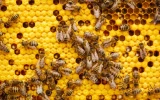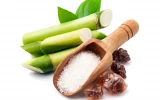How To Feed Honey Back to Bees: Do's and Don'ts
Do you want to feed honey back to bees but don't know how? We will give you tips on the dos and don'ts of feeding honey back to bees, from what type of honey to use to how much to give. Learn how to ensure your bees get the nutrition they need.
Feed the bees only what they need, and remove the remaining food before sundown. Do not feed them honey in direct sunlight, as it can cause the honey to spoil. Do not add water or anything else to the honey. Use a feeder or shallow bowl to store the honey, and make sure it is stored in a covered, dry container.
This article will show you the dos and don'ts of feeding honey to bees, including when and how to feed them, the types of honey to avoid, and other important tips.
Summary
- Feeding honey back to bees can help bees stay healthy and productive in a beehive.
- Providing a clean and the right amount of honey to bees are some of the dos when it comes to feeding it to them.
- Do not feed honey from different species back to the bees; this is one of the things to avoid.
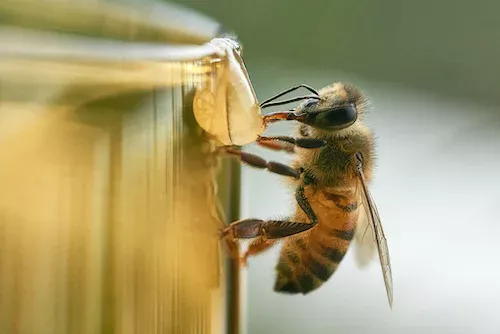
Feeding Honey Back to Bees
Honey bee health is closely linked to the food they consume. Providing honey back to bees is a common practice for beekeepers and can be beneficial for the bees in a variety of ways. Honey is a valuable source of energy and nutrition for bees and can help them stay healthy and productive.
Honey also contains essential vitamins, minerals, and enzymes that can help bees stay strong and healthy. In addition to providing nutrition, feeding honey back to bees can also help to prevent swarming, reduce the spread of diseases, and increase the honey production of a colony.
Honey should be fed back to bees when their honey stores are low. During the winter, bees may not have enough honey to feed their colony, so it is important to supplement their stores with supplemental feeding. Do this with either sugar syrup or honey.
Additionally, it's critical to keep an eye on the hive to ensure that the bees are taking the supplied food. The food should be taken out and refilled as soon as possible if it is not being eaten.
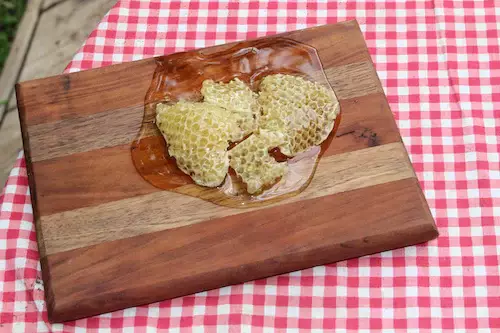
Do’s in Feeding Bees Honey
Here are the things to do when feeding honey back to bees.
1. Provide clean, uncontaminated honey
When feeding honey back to bees, make sure to use clean, uncontaminated honey that is free from pesticides, fungicides, and other contaminants. Because of how sensitive bees are to environmental toxins, consuming tainted honey can result in several health problems, including Colony Collapse Disorder.
Feeding bees contaminated honey can also cause the growth of diseases such as American Foulbrood, and other diseases that cause bee populations to decline. To ensure the safety of bees, beekeepers should only use honey that has been tested and certified as safe for bee consumption.
Beekeepers should also inspect the hives regularly and monitor the quality of the honey they are feeding their bees. If any impurities are found, the honey should be removed and a new batch made.
It is also important to note that honey should never be heated to a temperature higher than 104 °F (40 °C). Heating honey to higher temperatures can cause it to become toxic to bees and make them sick.
Finally, it is important to use honey that has been harvested ethically and sustainably. Beekeepers should avoid buying honey from unethical sources, such as large-scale commercial beekeepers that exploit their bees.
2. Feed only the amount of honey the bees need
Over-feeding the bees can be detrimental to their health and well-being. It can cause them to become too dependent on the supplemental feed and can lead to diseases such as dysentery, a deadly bacterial infection that can spread throughout the entire hive and result in the death of the colony. If the supplemental feed is necessary, it should be used sparingly and only when necessary.
3. Monitor the bees for signs of disease or distress
When giving honey back to bees, keep an eye out for symptoms of sickness or suffering. If any indications of sickness are noticed, cease feeding immediately and seek help from a beekeeper or local beekeeping group.
4. Provide suitable feeders
When feeding honey back to bees, it is important to use the right type of feeder. Suitable feeders provide a consistent source of food and protect the bees from becoming trapped inside. There are many types of bee feeders available, including those that hang from a tree branch, those that sit on a stake in the ground, and those that attach to the side of a hive.
5. Feed in the evening
By feeding honey to the bees in the evening, when they are less active and more likely to feed, you can ensure that they have enough food to sustain them throughout the night. Not only that, but honey can also help to attract other bees, which can help to bolster the colony's population. In addition, feeding honey in the evening can help reduce the need for supplemental feeding, which can save you time and money in the long run.
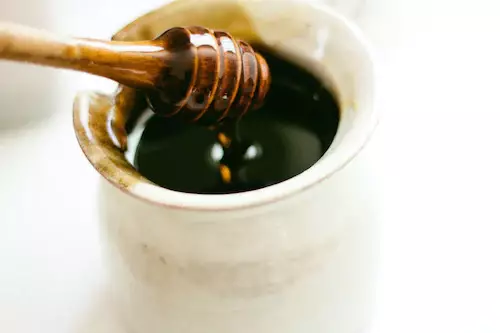
Don’ts in Feeding Bees Honey
When feeding honey back to bees, there are a few things to avoid.
1. Do not feed honey that has been processed or heated.
Heating honey can destroy the beneficial enzymes and other compounds that are beneficial to the bees. Furthermore, processed honey may contain additives or preservatives that can be harmful to the bees.
2. Do not feed honey from a different hive or a different species.
Different species of honey can contain different levels of nutrients and may not provide the necessary vitamins, minerals, and proteins that bees need to survive. It is best to feed them honey from their hive or from the same species to ensure that they are getting the best nutrition possible.
3. Do not feed honey that has been contaminated with pesticides, fungicides, or other chemicals.
Consuming honey with these contaminants can cause serious health issues such as nausea, vomiting, and even organ damage. Additionally, honey contamination can lead to the death of beneficial insects that rely on honey for food. Therefore, it is best to avoid honey that has been contaminated with any type of chemical and instead opt for organic, raw, and unprocessed honey.
4. Do not feed honey that has been stored in a plastic container.
Plastic containers can be a hazard to bees when used to store honey. When plastic containers are exposed to heat, they can leach chemicals into the honey, which can be dangerous to the bees. This can lead to a decrease in their immune system and an increase in mortality rates.
Bees are very sensitive to synthetic chemicals, and they are at a higher risk of contamination when stored in plastic containers. Thus, it is important to use glass or ceramic containers to store honey to protect the bees.
5. Do not feed honey that has been fed to other animals.
It is important to not feed bees honey that has been given to other animals. This is because the honey may contain bacteria or other pathogens from other animals that can be harmful to the bees.
It is also important to note that the honey should be free from any foreign substances that may have been introduced by the other animal. The honey should also be stored in a clean and dry container. Finally, it is important to always use clean utensils when handling the honey and to follow all safety procedures when feeding the bees.
